Airports—Energy and Sustainability Perspectives
Abstract
1. Introduction
1.1. Background
- ➢
- Policy and standardization.
- ➢
- Monitoring safety trends and indicators.
- ➢
- Safety analysis.
- ➢
- Implementing programs to address safety issues [4].
1.2. Carbon Emissions
- -
- Aviation demand: The magnitude of passengers and freight flown in kilometers.
- -
- Energy efficiency: The amount of energy being used per kilometer.
- -
- Carbon intensity: Different fuels’ yield to different rates of emitted carbon per unit of energy.
1.3. Sustainable Aviation Fuels (SAF)
- -
- Acquiring fuel approvals from the authorities: This can be both a lengthy and costly process.
- -
- Availability of feedstock to sustain long-term supply [16].
1.4. Airports
- -
- Providing power supply to the aircraft through a ground power unit (GPU).
- -
- Connecting a preconditioning air unit (PCA) during summer seasons for cooling and ventilation of aircraft.
- -
- Connecting an airbridge and/or a staircase for the passengers to exit/enter the aircraft.
- -
- Transporting passengers to and from the aircraft to the airport terminals.
- -
- Unloading and loading of aircraft baggage and cargo using belt or cargo loaders.
- -
- Supplying potable water and removing lavatory waste water from the aircraft using water trucks.
- -
- Refueling of aircraft using a fuel truck.
- -
- Cleaning of aircraft interior.
- -
- Providing catering supplies [21].
- -
- In cases of cold weather conditions, deicing of aircraft to remove surface frost, ice, or frozen contaminants.
- -
- Pushback operations, which involve pushing aircraft away from gates/parking positions in preparation for taxiing to the runway for departure. The procedure requires a specialized ground vehicle typically attached to the front wheel of the aircraft (see Figure 3a,b).
- -
- Management of passenger buildings and terminals: Managing everything from the check-in counters to security checkpoints.
- -
- Customer service delivery: Catering passengers needs within airports’ hotels, lounges, and other facilities.
- -
- Management of parking operations: Monitoring and controlling the overall traffic surrounding the airport. This primarily entails the transportation of passengers from parking lot areas and bus stations to the airport.
- -
- Security and safety operations: Maintaining a safe and secure environment for both passengers and staff. Patrolling and surveillance of airport infrastructure and surrounding areas (e.g., parking lots) are typical activities performed to enhance this crucial operation [23].
Airports
1.5. UN Sustainable Development Goals and Aviation Sector
- ➢
- Health aspects, where both air and noise pollution affect residents in the vicinity of airports and under flight paths. According to the World Health Organization, being subjected to continuous noise interference can cause cardiovascular and psychophysiological effects, sleep disturbance, reduced performance, provoke annoyance responses, and result in antisocial behavior [26]. Hence, from this perspective, SDG 3, which addresses good health and well-being, is undoubtedly concerned with the aviation sector and airport locations in particular.
- ➢
- Land use by airports is also an important factor from the sustainability perspective. Utilization of land to build airports is commonly associated with detrimental effects on natural habitats and ecosystems, such as groundwater contamination and erosion of land [26]. SDG 15, which covers the significance of protecting ecosystems and reversing land degradation, is an important goal.
- ➢
- The use of anti-icing to remove frost, snow, or ice from aircraft surfaces or runways can also have adverse environmental and human health impacts [26]. Here, SDGs 3 and 15 may be of concern.
- ➢
- Indirect impacts caused by the use of SAFs could also affect sustainability through various means, both positively and negatively. Positive impacts could simply be the use of SAFs to reduce CO2 emissions and hence pursuing SDGs 3, 7 and 13. However, this can also have negative impacts in terms of land use (hence SDG 15) when this involves securing feedstocks for SAF. Acquiring large areas of land to secure SAF production may also negatively affect food security (i.e., SDG 2) and cause imbalanced consumption and production of raw materials to secure SAFs (i.e., SDG 12).
2. Objectives
2.1. Aim
2.2. Research Gap
- ➢
- To fill the knowledge gap concerning airports’ role in enhancing the aviation sector from the perspective of sustainable development. This includes all three pillars of sustainability (environmental, societal, and economic) with a focus on the energy aspect.
- ➢
- To provide practical recommendations based on the results of both a literature review analysis and feedback from various international airport representatives and organizations.
2.3. Research Questions
- ➢
- Present status of today’s airports worldwide from an energy and a sustainability perspective.
- ➢
- Challenges and obstacles hindering the use or expansion of renewable energy within airports.
- ➢
- Practical steps and policies required to promote sustainability within airports.
3. Methodology and Case Study
3.1. Literature Review Approach
3.1.1. Search Strategy
3.1.2. Search Database
- -
- Better suited for evaluating the research results.
- -
- Having a wider and more inclusive content coverage.
- -
- Implemented impact indicators perform equally well and even better than the metrics of other databases such as WoS.
- -
- Subscription to one single database with no additional restrictions regarding content accessibility.
- -
- It is more open to society, as it provides free access to author and source information, including metrics [28].
3.1.3. Search Parameters
- ➢
- Search within: All fields.
- ➢
- Limited to: Review papers and English language.
- ➢
- Year range: 2000 till 2023.
- -
- Computer science.
- -
- Mathematics.
- -
- Agricultural and biological sciences.
- -
- Biochemistry, genetics and molecular biology.
- -
- Immunology and microbiology.
- -
- Pharmacology, toxicology and pharmaceutics.
- -
- Psychology.
- -
- Health professions.
- -
- Neuroscience.
- -
- Nursing, veterinary.
- -
- Chemical engineering.
- -
- Business, management and accounting.
- -
- Chemistry.
- -
- Materials science.
- -
- Arts and humanities.
- ▪
- Geographical distribution of paper.
- ▪
- Authors’ country.
- ▪
- Type of renewables.
- ▪
- Encountering challenges.
- ▪
- Solutions suggested.
- ▪
- Papers’ influence focus area.
3.2. Questionnaire
- ➢
- A cover email was included to explain the survey’s purpose, the participants involved, and the significance of the study.
- ➢
- An introduction about the subject was enclosed prior to the questions.
3.3. Respondents—Airports and Organizations
- -
- Dubai International Airport.
- -
- Muscat International Airport.
- -
- Stockholm Arlanda Airport.
- -
- Sydney Airport.
- -
- Toronto Pearson International Airport.
- -
- Zurich Airport.
- -
- International Civil Aviation Organization (ICAO).
4. Results
4.1. Literature Review Approach
4.1.1. Search Database
4.1.2. Challenges Encountered
- ➢
- Feasibility: The production pathways for either fuel remain a challenging factor, starting from the logistics and availability of the source (e.g., feedstock) to the conversion into fuels (e.g., boilers) and transportation, along with securing the storage means, all accounting for the feasibility of the fuel in question.
- ➢
- Future Implementation: Changes in and development of aircraft engines (e.g., propulsion systems) to suit SAF [30].
- ➢
- Economic burden: Huge enduring costs projected to help match alternative fuels to any newly designed engines. Costs are also attributed to the new infrastructure needed within airports for storage and transportation in the vicinity.
- ➢
- Policies: Lack of continuous appropriate regulatory and incentive frameworks to support SAF and overcome barriers.
- ➢
- Flexible generation: Although renewables such as wind and solar are envisioned as important sources of electricity, their intermittent nature makes them problematic in the long run when supply and demand do not align [31].
- ➢
- Highly reliable source of electricity: As mentioned earlier, the disadvantage of not having a continuous source of energy results in a requirement for investment in an energy storage facility [31].
- ➢
- Policies and incentives: Similar to the SAF category, the necessity of supporting policies for adopting renewable energy as an electricity source, whether to be used for the airport or even as an e-fuel, is crucial [32].
4.1.3. Recommended Solutions
- ➢
- Continuing research and development to address emissions, whether through SAF or RE (electricity), is economically viable.
- ➢
- Cooperation among stakeholders, aviation experts, governments, RE and SAF companies, and even agriculture organizations were seen as significant for the success of any initiative.
- ➢
- Encouragement from governments, banks, and investors also stood out as key players in overcoming economic barriers [33].
4.1.4. Geographical Distribution
4.2. Questionnaire
4.2.1. Challenges Encountered—Dubai, Muscat, and Sweden Airports
4.2.2. Key Measures—Dubai, Muscat, and Sweden Airports
4.2.3. Challenges Encountered—Sydney, Toronto, and Zurich Airports
4.2.4. Key Measures—Sydney, Toronto, and Zurich Airports
4.2.5. Summary—Questionnaire Responses
4.3. Literature Review and Questionnaire Responses
5. Discussion
- ▪
- The importance of creating energy policy frameworks is tailored to local conditions and is supported by international cooperation.
- ▪
- Strategic policy sequencing has a positive impact on the creation of a new energy market, with technology-push policies and demand-pull measures.
- ▪
- The importance of early and substantial governmental R&D support is a crucial element in fostering competition and diverse solutions, with market-based policies implemented as technologies mature.
- ▪
- It is necessary for all supply chain stakeholders to be subjected to predictable, long-term, and globally harmonized policies.
- ▪
- There is an urgent and substantial practical and financial need to support emerging economies in the development of new energy markets [44].
- ➢
- Feed-in Tariff (FIT): A policy that guarantees a fixed price for electricity over a specified timeframe, thus ensuring stable predictable revenue for RES producers and airports. This policy, as described by IATA, reduces risk, fosters investment, and spurs innovation in the sector.
- ➢
- Power Purchase Agreement (PPA): A long-term contractual fixed-price policy often spanning 10 to 15 years helps mitigate fluctuating prices in the electricity market. Moreover, the policy agreement can sustain RES operations after expiry of government subsidies [44].
6. Limitations
- ▪
- Introduce more search engines in the literature review (e.g., Google scholar, etc.).
- ▪
- Acquire more responses from airports and certainly from other aviation experts, including airlines.
- ▪
- Introduce new in-depth questions and tweak existing ones in the questionnaire to represent the aviation sector as a whole and not just airports. This may have resulted in different responses from the respondents.
7. Conclusions
8. Future Prospects
Supplementary Materials
Author Contributions
Funding
Conflicts of Interest
References and Notes
- Baker, J. The World’s Most Environmentally Friendly Airports. Airport Industry Review. 2018. Available online: https://www.airport-technology.com/features/worlds-environmentally-friendly-airports/?cf-view&cf-closed (accessed on 5 February 2024).
- YusaFandes, L.; Abu Talib, A.R.; Altarazi, Y.S.M.; Alrefae, W.; Kadirgama, K.; Ramasamy, D.; Jayasuriya, A.; Brown, G.; Mamat, R.; Dhahad, H.A.; et al. Sustainable Aviation—Hydrogen Is the Future. Sustainability 2022, 14, 548. [Google Scholar] [CrossRef]
- Jamsari, E.; Aliff, M.; Nawi, M.; Sulaiman, A.; Sidik, R.; Zaidi, Z.; Abul, M.; Ashari, H. ORIGINAL ARTICLE Ibn Firnas and His Contribution to the Aviation Technology of the World. Orig. Artic. 2013, 7, 74–78. [Google Scholar]
- ICAO Aviation Benefits Report. 2019. Available online: https://www.icao.int/sustainability/Documents/AVIATION-BENEFITS-2019-web.pdf (accessed on 20 March 2024).
- IATA Secured and Simplified Borders. 2021. Available online: https://www.iata.org/contentassets/67e015cf3db1410392cd5b5bb5961a16/iata-ssb_feb-2021.pdf (accessed on 23 April 2024).
- OECD Emissions of Carbon Dioxide. Environment and Science Air and Climate. 2015. Available online: https://www.oecd-ilibrary.org/emissions-of-carbon-dioxide_5jm0wzlvjfq8.pdf (accessed on 15 February 2024).
- Ritchie, H. What Share of Global CO2 Emissions Come from Aviation? Our World in Data. 2024. Available online: https://ourworldindata.org/global-aviation-emissions (accessed on 8 May 2024).
- Kim, H.; Teter, J. Aviation. International Energy Agency. 11 July 2023. Available online: https://www.iea.org/energy-system/transport/aviation (accessed on 18 April 2024).
- Report on CORSIA Implications and Carbon Market Development (Deliverable 3.2.) Assess CORSIA Implications and Carbon Market Development Prepared by KPMG in Ukraine. 2022. Available online: https://www.undp.org/sites/g/files/zskgke326/files/2023-02/Report%20on%20CORSIA%20implications%20and%20carbon%20market%20development%20%28Deliverable%203.2.%29.pdf (accessed on 18 April 2024).
- Prussi, M.; Lee, U.; Wang, M.; Malina, R.; Valin, H.; Taheripour, F.; Velarde, C.; Staples, M.D.; Lonza, L.; Hileman, J.I. CORSIA: The first internationally adopted approach to calculate life-cycle GHG emissions for aviation fuels. Renew. Sustain. Energy Rev. 2021, 150, 111398. [Google Scholar] [CrossRef]
- CORSIA States for Chapter 3 State Pairs. Www.icao.int. 2024. Available online: https://www.icao.int/environmental-protection/CORSIA/Pages/state-pairs.aspx (accessed on 10 June 2024).
- Credible Carbon Offsets Vital to Net Zero. Airlines. 14 September 2022. Available online: https://airlines.iata.org/2022/09/14/credible-carbon-offsets-vital-net-zero?_gl=1%2A1d37tg%2A_gcl_au%2AMTE3NjE5NTI1Mi4xNzI0MTQ1NTI3%2A_ga%2AMTY5MTA4MjM5MS4xNzExNjM3ODU4%2A_ga_PLLG1EY0X0%2AMTcyNjc3NzI3OS4xMy4xLjE3MjY3NzczMjEuMTguMC4w&_ga=2.129823951.239064625.1726777280-1691082391.1711637858 (accessed on 4 March 2024).
- Braun, M.; Grimme, W.; Oesingmann, K. Pathway to net zero: Reviewing sustainable aviation fuels, environmental impacts and pricing. J. Air Transp. Manag. 2024, 117, 102580. [Google Scholar] [CrossRef]
- Temminghoff, M.; Kuen, M.; Cohen, J.; Duong, P.; Deverell, J.; Palfreyman, D.; Livitsanis, A.; Clark, J.; Patel, J.; Moore, A. Sustainable Aviation Fuel Roadmap. CSIRO. 2023. Available online: https://www.csiro.au/-/media/Energy/Sustainable-Aviation-Fuel/Sustainable-Aviation-Fuel-Roadmap.pdf (accessed on 6 May 2024).
- Pipitone, G.; Zoppi, G.; Pirone, R.; Bensaid, S. Sustainable aviation fuel production using in-situ hydrogen supply via aqueous phase reforming: A techno-economic and life-cycle greenhouse gas emissions assessment. J. Clean. Prod. 2023, 418, 138141. [Google Scholar] [CrossRef]
- Sustainable Aviation Fuels (SAF). EASA. 2024. Available online: https://www.easa.europa.eu/en/domains/environment/sustainable-aviation-fuels-saf (accessed on 8 July 2024).
- Chen, S.; Wu, L.; Ng KK, H.; Liu, W.; Wang, K. How airports enhance the environmental sustainability of operations: A critical review from the perspective of Operations Research. Transp. Res. Part E Logist. Transp. Rev. 2024, 183, 103440. [Google Scholar] [CrossRef]
- Schmidt, M. A review of aircraft turnaround operations and simulations. Prog. Aerosp. Sci. 2017, 92, 25–38. [Google Scholar] [CrossRef]
- Raimundo, R.; Baltazar, M.E.; Cruz, S. Sustainability in the Airports Ecosystem: A Literature Review. Sustainability 2023, 15, 12325. [Google Scholar] [CrossRef]
- Di Mascio, P.; Moretti, L.; Piacitelli, M. Airport Landside Sustainable Capacity and Level of Service of Terminal Functional Subsystems. Sustainability 2020, 12, 8784. [Google Scholar] [CrossRef]
- Malandri, C.; Mantecchini, L.; Reis, V. Aircraft turnaround and industrial actions: How ground handlers’ strikes affect airport airside operational efficiency. J. Air Transp. Manag. 2019, 78, 23–32. [Google Scholar] [CrossRef]
- Kotatis, K. Stockholm Arlanda Airport. [Photograph] (Musadag El Zein’s Own Private Collection). 2024.
- Han, S. Airport Operations: What Are the Common Roles In This Field? Everglades University. 22 January 2020. Available online: https://www.evergladesuniversity.edu/blog/common-airport-operations/ (accessed on 12 April 2024).
- Sreenath, S.; Sudhakar, K.; Yusop, A. Sustainability at airports: Technologies and best practices from ASEAN countries. J. Environ. Manag. 2021, 299, 113639. [Google Scholar] [CrossRef] [PubMed]
- MAQASID AS- SHARI’AH AND SUSTAINABLE DEVELOPMENT SDGs Pictorial Representation, SDG 2016 Report OUTLINE. 2016. Available online: http://irep.iium.edu.my/84570/14/84570%20%20Maqasid%20Al-Shariah%20and%20Sustainable%20Development.pdf (accessed on 5 June 2024).
- Perryman, M.; Besco, L.; Suleiman, C.; Lucato, L. Ready for take off: Airline engagement with the United Nations Sustainable Development Goals. J. Air Transp. Manag. 2022, 103, 102246. [Google Scholar] [CrossRef]
- Snyder, H. Literature Review as a Research methodology: An Overview and Guidelines. J. Bus. Res. 2019, 104, 333–339. [Google Scholar] [CrossRef]
- Pranckutė, R. Web of Science (WoS) and Scopus: The Titans of Bibliographic Information in Today’s Academic World. Publications 2021, 9, 12. [Google Scholar] [CrossRef]
- Taherdoost, H. Designing a Questionnaire for a Research Paper: A Comprehensive Guide to Design and Develop an Effective Questionnaire. Asian J. Manag. Sci. 2022, 11, 8–16. [Google Scholar] [CrossRef]
- Dahal, K.; Brynolf, S.; Xisto, C.; Hansson, J.; Grahn, M.; Grönstedt, T.; Lehtveer, M. Techno-economic review of alternative fuels and propulsion systems for the aviation sector. Renew. Sustain. Energy Rev. 2021, 151, 111564. [Google Scholar] [CrossRef]
- Davis, S.J.; Lewis, N.S.; Shaner, M.; Aggarwal, S.; Arent, D.; Azevedo, I.L.; Benson, S.M.; Bradley, T.; Brouwer, J.; Chiang, Y.-M.; et al. Net-zero emissions energy systems. Science 2018, 360, eaas9793. [Google Scholar] [CrossRef]
- Brynolf, S.; Hansson, J.; E Anderson, J.; Skov, I.R.; Wallington, T.J.; Grahn, M.; Korberg, A.D.; Malmgren, E.; Taljegård, M. Review of electrofuel feasibility—Prospects for road, ocean, and air transport. Prog. Energy 2022, 4, 042007. [Google Scholar] [CrossRef]
- Wang, W.-C.; Tao, L. Bio-jet fuel conversion technologies. Renew. Sustain. Energy Rev. 2016, 53, 801–822. [Google Scholar] [CrossRef]
- Whistance, J.; Debnath, D.; Thompson, W. A biofuels outlook for the U.S. and Brazil and what it might mean for sustainable development goal 7. Front. Chem. Eng. 2024, 5, 1290763. [Google Scholar] [CrossRef]
- Annual Report (Oman Airports). Oman Airports. 2023. Available online: https://www.omanairports.co.om/pdf/annual/OA_Annual_Report2023En-10_Web_Small.pdf (accessed on 9 February 2024).
- DXB Installs the Middle East’s Largest Airport Solar Energy System. International Airport Review. 2024. Available online: https://www.internationalairportreview.com/news/97372/solar-plant-dubai-international-airport/ (accessed on 10 July 2024).
- Zurich Airport’s Comprehensive Approach to Sustainability. International Airport Review. 2023. Available online: https://www.internationalairportreview.com/article/185645/zurich-airports-comprehensive-approach-to-sustainability/ (accessed on 9 June 2024).
- Climate Change. Pearson Airport. 2024. Available online: https://www.torontopearson.com/en/community/environment/climate-change (accessed on 11 July 2024).
- Fortum. PPA: Stability and Carbon-Free Electricity through Long-Term Power Purchase Agreements. Fortum. 2022. Available online: https://www.fortum.com/services/power-trading-and-energy-supply/carbon-free-ppas?gad_source=1&gclid=Cj0KCQjwmOm3BhC8ARIsAOSbapWFtupodFFD0lYJSMjMVgbFl3b-WXeWLoYZ5iVHahjY75_n6yL07HEaAiqnEALw_wcB (accessed on 6 May 2024).
- Ahmad, S.; Xu, B. A cognitive mapping approach to analyse stakeholders’ perspectives on sustainable aviation fuels. Transp. Res. Part D Transp. Environ. 2021, 100, 103076. [Google Scholar] [CrossRef]
- Freeman, R.E.; Reed, D.L. Stockholders and stakeholders: A new perspective on corporate governance. Calif. Manag. Rev. 1983, 25, 88–106. [Google Scholar] [CrossRef]
- Debbage, K.G.; Debbage, N. Aviation carbon emissions, route choice and tourist destinations: Are non-stop routes a remedy? Ann. Tour. Res. 2019, 79, 102765. [Google Scholar] [CrossRef]
- ICAO. A Focus on the Production of Renewable Energy at the Airport Site. Eco Airport Toolkit Environment. 2016. Available online: https://www.icao.int/environmental-protection/Documents/Energy%20at%20Airports.pdf (accessed on 1 February 2024).
- IATA. A Reflection on Policies Used to Support the Creation of New Renewable Energy Markets. Lessons for Aviation. IN-DEPTH. 2024. Available online: https://www.iata.org/contentassets/0bf212bfcb0548f2b6ad4c1e229f7e94/In-Depth_WindAndSolarPolicies_IATA_25072024.pdf (accessed on 15 July 2024).
- ICAO. Renewable Energy For Aviation: Practical Applications to Achieve Carbon Reductions and Cost Savings Transforming Global Aviation Collection 1 of 4. 2017. Available online: https://www.icao.int/environmental-protection/Documents/ICAO_UNDP_GEF_RenewableEnergyGuidance.pdf (accessed on 1 March 2024).
- Theodoros Papachristou. Over 600 Airports Accredited Under Airport Carbon Accreditation: A New Milestone in Airport Climate Action—Airport Carbon Accreditation. Airport Carbon Accreditation. 28 November 2024. Available online: https://www.airportcarbonaccreditation.org/over-600-airports-accredited-under-airport-carbon-accreditation-a-new-milestone-in-airport-climate-action/ (accessed on 20 January 2025).
- Annex 8: Air Traffic Management. Europa.eu. 13 January 2025. Available online: https://www.eea.europa.eu/en/analysis/publications/transport-and-environment-report-2022/annex-8-air-traffic-management (accessed on 2 February 2025).
- Topic: WA 2.7 ATM Application-Oriented Research for Aviation Green Deal Consortium Coordinator: DLR e.V. (n.d.). Retrieved 17 February 2025. Available online: https://westminsterresearch.westminster.ac.uk/download/57ca045c15c617fdc54b853ef65dac96727c080826534d8312cb5d2f43386272/1767249/Green-GEAR%20D5.1%20-%20Initial%20OSED%20-%20Green%20RC%20-%20v1.0%2020240629.pdf (accessed on 17 February 2025).
- Union, E. Air Traffic Management and the Green Deal. 2024. Available online: https://www.sesarju.eu/sites/default/files/documents/reports/air%20traffic%20management%20and%20the%20green%20deal%202024.pdf (accessed on 15 February 2025).
- ICAO Operational Measures. Www.icao.int. 2024. Available online: https://www.icao.int/environmental-protection/pages/operational-measures.aspx (accessed on 1 December 2024).
- Abu Salem, K.; Palaia, G.; Quarta, A.A. Review of hybrid-electric aircraft technologies and designs: Critical analysis and novel solutions. Prog. Aerosp. Sci. 2023, 141, 100924. [Google Scholar] [CrossRef]
- Adler, E.J.; Martins JR, R.A. Hydrogen-powered aircraft: Fundamental concepts, key technologies, and environmental impacts. Prog. Aerosp. Sci. 2023, 141, 100922. [Google Scholar] [CrossRef]
- Afonso, F.; Sohst, M.; Diogo CM, A.; Rodrigues, S.S.; Ferreira, A.; Ribeiro, I.; Marques, R.; Rego FF, C.; Sohouli, A.; Portugal-Pereira, J.; et al. Strategies towards a more sustainable aviation: A systematic review. Prog. Aerosp. Sci. 2023, 137, 100878. [Google Scholar] [CrossRef]
- AG, F.Z. (n.d.). Commitment—Flughafen Zuerich. Www.flughafen-Zuerich.ch. Available online: https://www.flughafen-zuerich.ch/en/company/responsibility/sustainability/commitment (accessed on 1 March 2024).
- Airports. Icao.int. 2019. Available online: https://www.icao.int/environmental-protection/Pages/Airports.aspx (accessed on 3 April 2024).
- Alherbawi, M.; McKay, G.; Mackey, H.R.; Al-Ansari, T. Jatropha curcas for jet biofuel production: Current status and future prospects. Renew. Sustain. Energy Rev. 2021, 135, 110396. [Google Scholar] [CrossRef]
- Ansell, P.J. Review of sustainable energy carriers for aviation: Benefits, challenges, and future viability. Prog. Aerosp. Sci. 2023, 141, 100919. [Google Scholar] [CrossRef]
- Bravo-Mosquera, P.D.; Catalano, F.M.; Zingg, D.W. Unconventional aircraft for civil aviation: A review of concepts and design methodologies. Prog. Aerosp. Sci. 2022, 131, 100813. [Google Scholar] [CrossRef]
- CAEP Working Group 2. Icao.int. 2019. Available online: https://www.icao.int/environmental-protection/Pages/CAEP-WG2.aspx (accessed on 4 May 2024).
- Chakraborty, S.; Dash, S.K.; Elavarasan, R.M.; Kaur, A.; Elangovan, D.; Meraj, S.T.; Kasinathan, P.; Said, Z. Hydrogen Energy as Future of Sustainable Mobility. Front. Energy Res. 2022, 10, 893475. [Google Scholar] [CrossRef]
- De Souza, L.M.; Mendes PA, S.; Aranda DA, G. Assessing the current scenario of the Brazilian biojet market. Renew. Sustain. Energy Rev. 2018, 98, 426–438. [Google Scholar] [CrossRef]
- Delbecq, S.; Fontane, J.; Gourdain, N.; Planes, T.; Simatos, F. Sustainable aviation in the context of the Paris Agreement: A review of prospective scenarios and their technological mitigation levers. Prog. Aerosp. Sci. 2023, 141, 100920. [Google Scholar] [CrossRef]
- Doliente, S.S.; Narayan, A.; Tapia JF, D.; Samsatli, N.J.; Zhao, Y.; Samsatli, S. Bio-aviation Fuel: A Comprehensive Review and Analysis of the Supply Chain Components. Front. Energy Res. 2020, 8, 110. [Google Scholar] [CrossRef]
- Escalante, E.S.R.; Ramos, L.S.; Rodriguez Coronado, C.J.; de Carvalho Júnior, J.A. Evaluation of the potential feedstock for biojet fuel production: Focus in the Brazilian context. Renew. Sustain. Energy Rev. 2022, 153, 111716. [Google Scholar] [CrossRef]
- Fakhreddine, O.; Gharbia, Y.; Derakhshandeh, J.F.; Amer, A.M. Challenges and Solutions of Hydrogen Fuel Cells in Transportation Systems: A Review and Prospects. World Electr. Veh. J. 2023, 14, 156. [Google Scholar] [CrossRef]
- Gao, Z.; Mavris, D.N. Statistics and Machine Learning in Aviation Environmental Impact Analysis: A Survey of Recent Progress. Aerospace 2022, 9, 750. [Google Scholar] [CrossRef]
- Goh BH, H.; Chong, C.T.; Ong, H.C.; Seljak, T.; Katrašnik, T.; Józsa, V.; Ng, J.-H.; Tian, B.; Karmarkar, S.; Ashokkumar, V. Recent advancements in catalytic conversion pathways for synthetic jet fuel produced from bioresources. Energy Convers. Manag. 2022, 251, 114974. [Google Scholar] [CrossRef]
- Gray, N.; McDonagh, S.; O’Shea, R.; Smyth, B.; Murphy, J.D. Decarbonising ships, planes and trucks: An analysis of suitable low-carbon fuels for the maritime, aviation and haulage sectors. Adv. Appl. Energy 2021, 1, 100008. [Google Scholar] [CrossRef]
- GTAA Environmental Policy. (n.d.). Available online: https://cdn.torontopearson.com/-/media/project/pearson/content/airport-employees/courses/pdfs/gtaa-environmental-policy-2021-final.pdf?rev=b31b012e536847c79cf7ea48bdfa026e&modified=20210505162946 (accessed on 7 April 2024).
- Herr, A.; Braid, A.; Carter, J.; McIvor, J.; Murphy, H.T.; O’Connell, D.; Raisbeck-Brown, N.; Poole, M. Cut your grass and eat it too– Is aviation biofuel production and grazing in the Australian tropics possible? Renew. Sustain. Energy Rev. 2016, 53, 1377–1388. [Google Scholar] [CrossRef]
- Hu, Y.-J.; Yang, L.; Cui, H.; Wang, H.; Li, C.; Tang, B.-J. Strategies to Mitigate Carbon Emissions for Sustainable Aviation: A Critical Review From a Life-cycle Perspective. Sustain. Prod. Consum. 2022, 33, 788–808. [Google Scholar] [CrossRef]
- Degirmenci, H.; Uludag, A.; Ekici, S.; Karakoc, T.H. Challenges, prospects and potential future orientation of hydrogen aviation and the airport hydrogen supply network: A state-of-art review. Prog. Aerosp. Sci. 2023, 141, 100923. [Google Scholar] [CrossRef]
- ICAO—United Nations Development Programme (UNDP) Project—Financed by the Global Environment Facility (GEF). (n.d.). www.icao.int. Available online: https://www.icao.int/environmental-protection/pages/icao_undp.aspx (accessed on 2 April 2024).
- Jiang, J.; Li, Z.; Li, W.; Ranjan, P.; Wei, X.; Zhang, X.; Zhang, C. A review on insulation challenges towards electrification of aircraft. High Volt. 2023, 8, 209–230. [Google Scholar] [CrossRef]
- Khan, M.Z.A.; Khan, H.A.; Ravi, S.S.; Turner, J.W.; Aziz, M. Potential of clean liquid fuels in decarbonizing transportation—An overlooked net- zero pathway? Renew. Sustain. Energy Rev. 2023, 183, 113483. [Google Scholar] [CrossRef]
- Khan MA, H.; Bonifacio, S.; Clowes, J.; Foulds, A.; Holland, R.; Matthews, J.C.; Percival, C.J.; Shallcross, D.E. Investigation of Biofuel as a Potential Renewable Energy Source. Atmosphere 2021, 12, 1289. [Google Scholar] [CrossRef]
- Kolosz, B.W.; Luo, Y.; Xu, B.; Maroto-Valer, M.M.; Andresen, J.M. Life cycle environmental analysis of “drop in” alternative aviation fuels: A review. Sustain. Energy Fuels 2020, 4, 3229–3263. [Google Scholar] [CrossRef]
- Korkut, E.; Fowler, L.B. Regulatory and Policy Analysis of Production, Development and Use of Sustainable Aviation Fuels in the United States. Front. Energy Res. 2021, 9, 750514. [Google Scholar] [CrossRef]
- Kramer, S.; Andac, G.; Heyne, J.; Ellsworth, J.; Herzig, P.; Lewis, K.C. Perspectives on Fully Synthesized Sustainable Aviation Fuels: Direction and Opportunities. Front. Energy Res. 2022, 9, 782823. [Google Scholar] [CrossRef]
- Kushwaha, N.; Banerjee, D.; Ahmad, K.A.; Shetti, N.P.; Aminabhavi, T.M.; Pant, K.K.; Ahmad, E. Catalytic production and application of bio-renewable butyl butyrate as jet fuel blend- A review. J. Environ. Manag. 2022, 310, 114772. [Google Scholar] [CrossRef]
- Lai, Y.Y.; Christley, E.; Kulanovic, A.; Teng, C.C.; Björklund, A.; Nordensvärd, J.; Karakaya, E.; Urban, F. Analysing the opportunities and challenges for mitigating the climate impact of aviation: A narrative review. Renew. Sustain. Energy Rev. 2022, 156, 111972. [Google Scholar] [CrossRef]
- Larsson, J.; Elofsson, A.; Sterner, T.; Åkerman, J. International and national climate policies for aviation: A review. Clim. Policy 2019, 19, 787–799. [Google Scholar] [CrossRef]
- Leal Filho, W.; Ng, A.W.; Sharifi, A.; Janová, J.; Özuyar, P.G.; Hemani, C.; Heyes, G.; Njau, D.; Rampasso, I. Global tourism, climate change and energy sustainability: Assessing carbon reduction mitigating measures from the aviation industry. Sustain. Sci. 2022, 18, 983–996. [Google Scholar] [CrossRef] [PubMed]
- Martinez-Valencia, L.; Garcia-Perez, M.; Wolcott, M.P. Supply chain configuration of sustainable aviation fuel: Review, challenges, and pathways for including environmental and social benefits. Renew. Sustain. Energy Rev. 2021, 152, 111680. [Google Scholar] [CrossRef]
- Mohammad, A.K.; Sumeray, C.; Richmond, M.; Hinshelwood, J.; Ghosh, A. Assessing the Sustainability of Liquid Hydrogen for Future Hypersonic Aerospace Flight. Aerospace 2022, 9, 801. [Google Scholar] [CrossRef]
- Murphy, H.T.; O’Connell, D.A.; Raison, R.J.; Warden, A.C.; Booth, T.H.; Herr, A.; Braid, A.L.; Crawford, D.F.; Hayward, J.A.; Jovanovic, T.; et al. Biomass production for sustainable aviation fuels: A regional case study in Queensland. Renew. Sustain. Energy Rev. 2015, 44, 738–750. [Google Scholar] [CrossRef]
- Neves, R.C.; Klein, B.C.; da Silva, R.J.; Rezende MC, A.F.; Funke, A.; Olivarez-Gómez, E.; Bonomi, A.; Maciel-Filho, R. A vision on biomass-to-liquids (BTL) thermochemical routes in integrated sugarcane biorefineries for biojet fuel production. Renew. Sustain. Energy Rev. 2020, 119, 109607. [Google Scholar] [CrossRef]
- Okolie, J.A.; Awotoye, D.; Tabat, M.E.; Okoye, P.U.; Epelle, E.I.; Ogbaga, C.C.; Güleç, F.; Oboirien, B. Multi-criteria decision analysis for the evaluation and screening of sustainable aviation fuel production pathways. iScience 2023, 26, 106944. [Google Scholar] [CrossRef]
- Otto, M.; Chagoya, K.L.; Blair, R.G.; Hick, S.M.; Kapat, J.S. Optimal hydrogen carrier: Holistic evaluation of hydrogen storage and transportation concepts for power generation, aviation, and transportation. J. Energy Storage 2022, 55, 105714. [Google Scholar] [CrossRef]
- Owen, B.; Anet, J.G.; Bertier, N.; Christie, S.; Cremaschi, M.; Dellaert, S.; Edebeli, J.; Janicke, U.; Kuenen, J.; Lim, L.; et al. Review: Particulate Matter Emissions from Aircraft. Atmosphere 2022, 13, 1230. [Google Scholar] [CrossRef]
- Phippen, W.B.; Rhykerd, R.; Sedbrook, J.C.; Handel, C.; Csonka, S. From Farm to Flight: CoverCress as a Low Carbon Intensity Cash Cover Crop for Sustainable Aviation Fuel Production. A Review of Progress Towards Commercialization. Front. Energy Res. 2022, 10, 793776. [Google Scholar] [CrossRef]
- Schönsteiner, K.; Massier, T.; Hamacher, T. Sustainable transport by use of alternative marine and aviation fuels—A well-to-tank analysis to assess interactions with Singapore’s energy system. Renew. Sustain. Energy Rev. 2016, 65, 853–871. [Google Scholar] [CrossRef]
- Siew Ng, K.; Farooq, D.; Yang, A. Global biorenewable development strategies for sustainable aviation fuel production. Renew. Sustain. Energy Rev. 2021, 150, 111502. [Google Scholar] [CrossRef]
- Simorgh, A.; Soler, M.; González-Arribas, D.; Matthes, S.; Grewe, V.; Dietmüller, S.; Baumann, S.; Yamashita, H.; Yin, F.; Castino, F.; et al. A Comprehensive Survey on Climate Optimal Aircraft Trajectory Planning. Aerospace 2022, 9, 146. [Google Scholar] [CrossRef]
- Singh, H.; Li, C.; Cheng, P.; Wang, X.; Liu, Q. A critical review of technologies, costs, and projects for production of carbon-neutral liquid e-fuels from hydrogen and captured CO2. Energy Adv. 2022, 1, 580–605. [Google Scholar] [CrossRef]
- UPWARD, TOGETHER GTAA SUSTAINABILITY REPORT 2022. (n.d.). 21 August 2024. Available online: https://cdn.torontopearson.com/-/media/project/pearson/content/corporate/who-we-are/pdfs/gtaa-2022-sustainability-report.pdf?rev=25287967c54749af98226bb532d2b53c&hash=E5EC76D0AD98E0E3937C21271894E381 (accessed on 6 June 2024).
- Wang, H.; Yang, B.; Zhang, Q.; Zhu, W. Catalytic routes for the conversion of lignocellulosic biomass to aviation fuel range hydrocarbons. Renew. Sustain. Energy Rev. 2020, 120, 109612. [Google Scholar] [CrossRef]
- Zhang, C.; Chen, L.; Ding, S.; Zhou, X.; Chen, R.; Zhang, X.; Yu, Z.; Wang, J. Mitigation effects of alternative aviation fuels on non-volatile particulate matter emissions from aircraft gas turbine engines: A review. Sci. Total Environ. 2022, 820, 153233. [Google Scholar] [CrossRef]
- Zhou, Y. Low-carbon transition in smart city with sustainable airport energy ecosystems and hydrogen-based renewable-grid-storage-flexibility. Energy Rev. 2022, 1, 100001. [Google Scholar] [CrossRef]

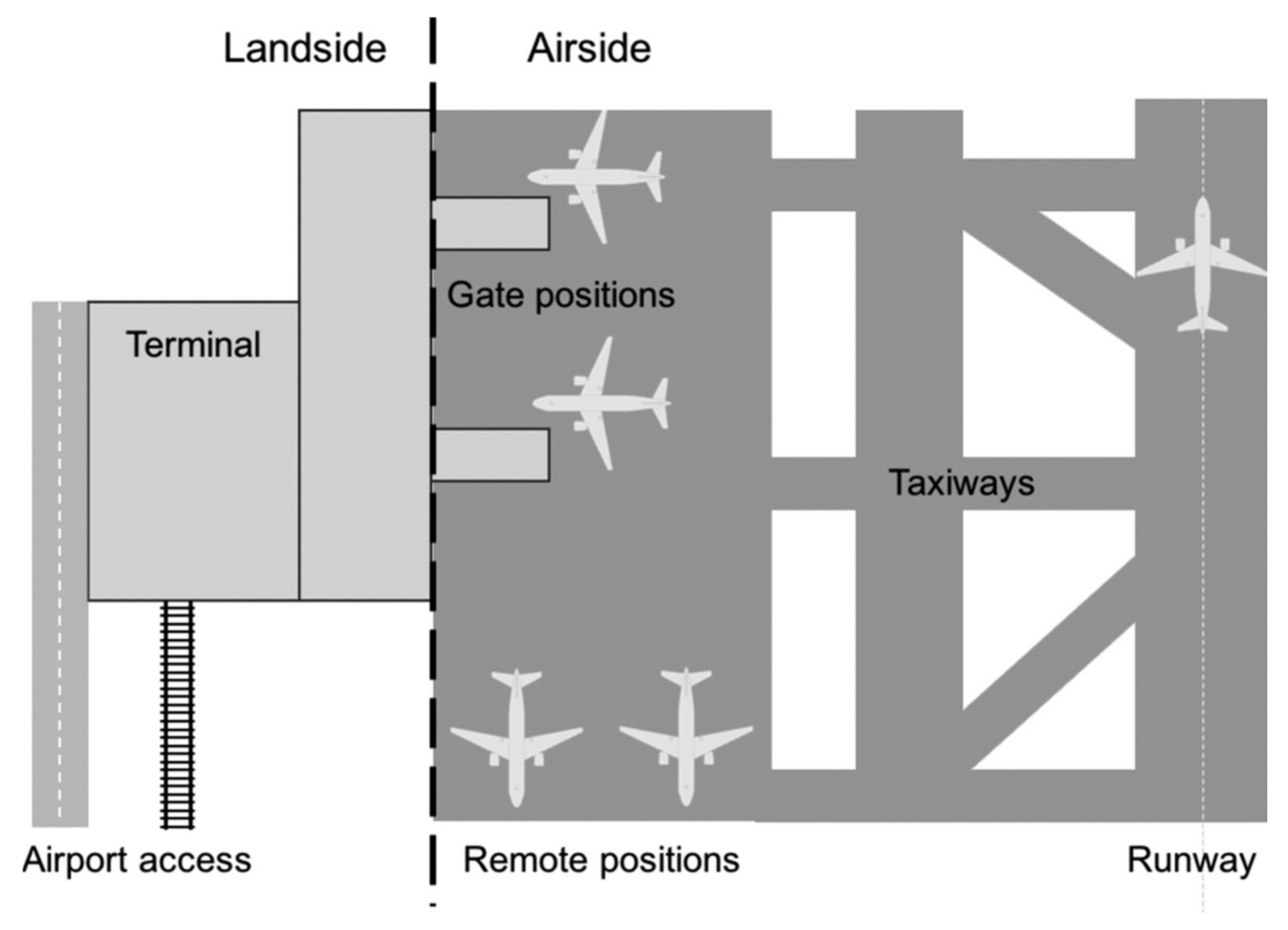

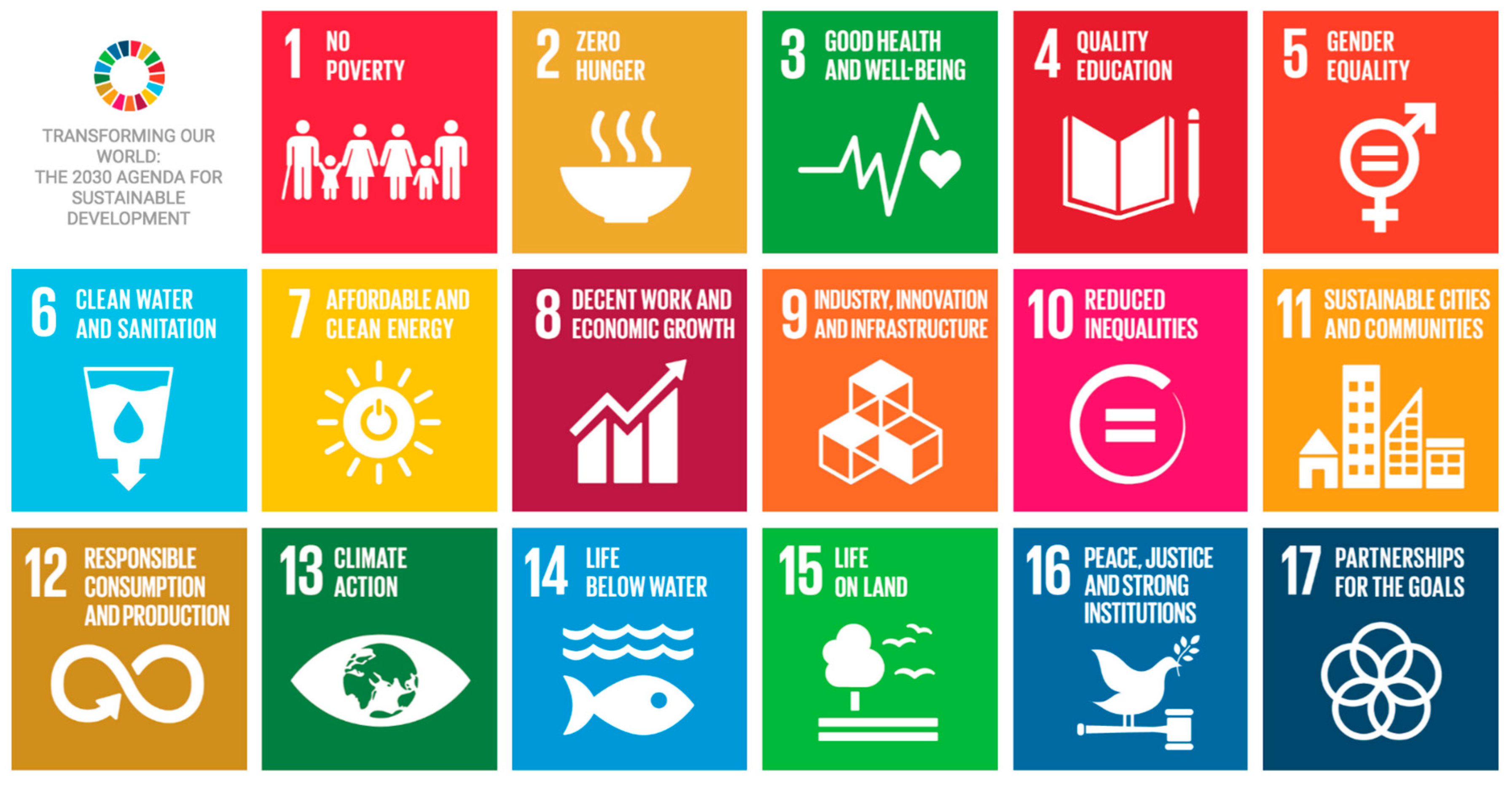

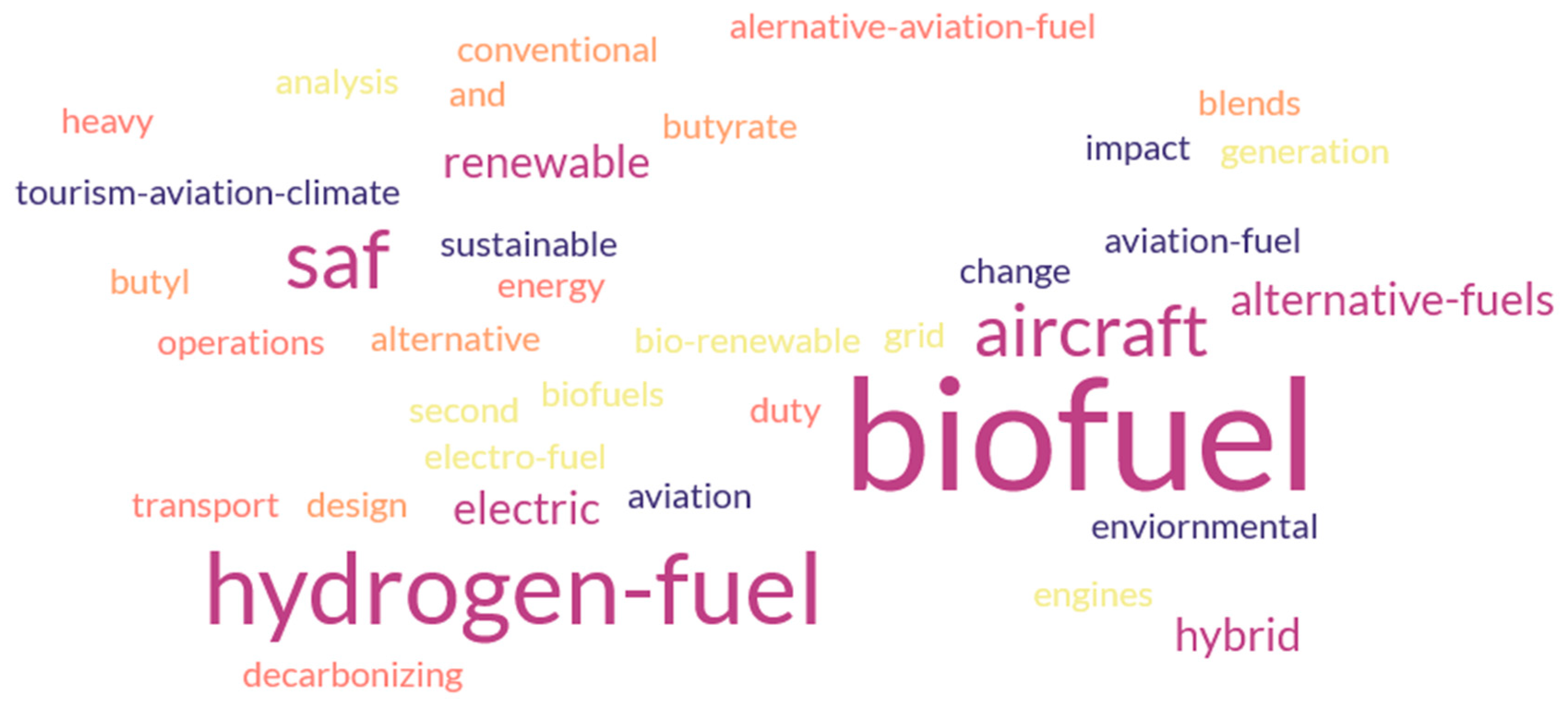
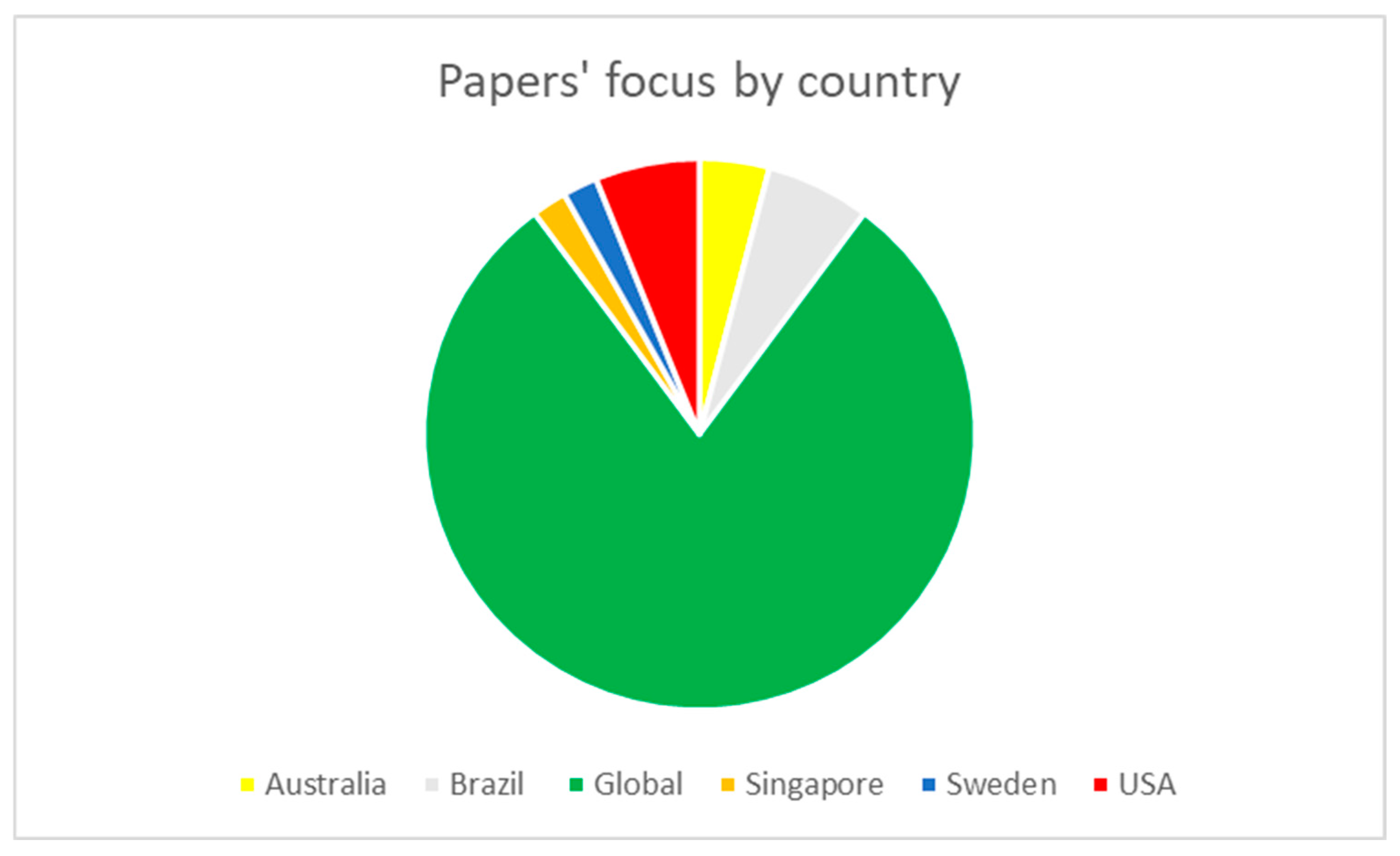
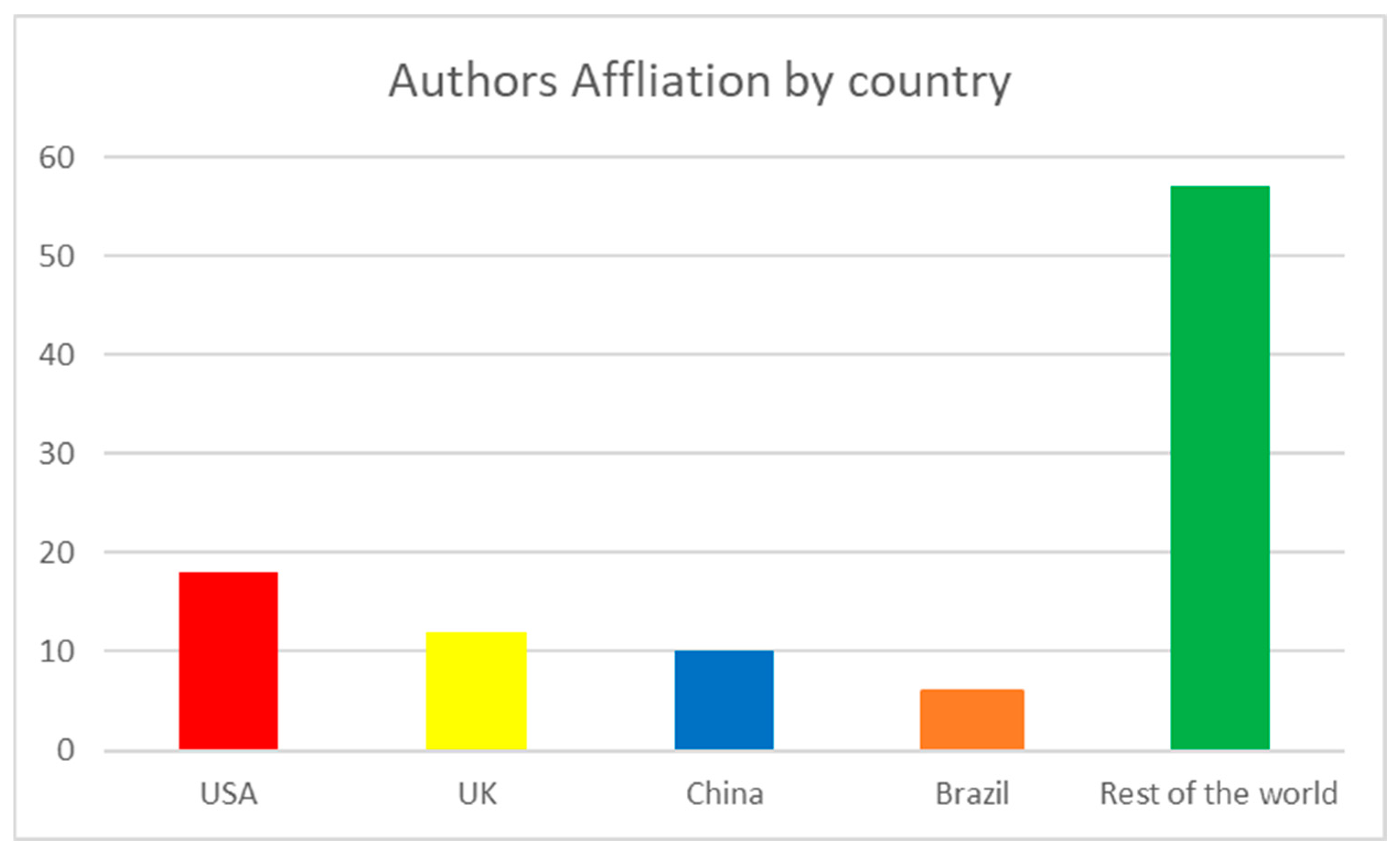
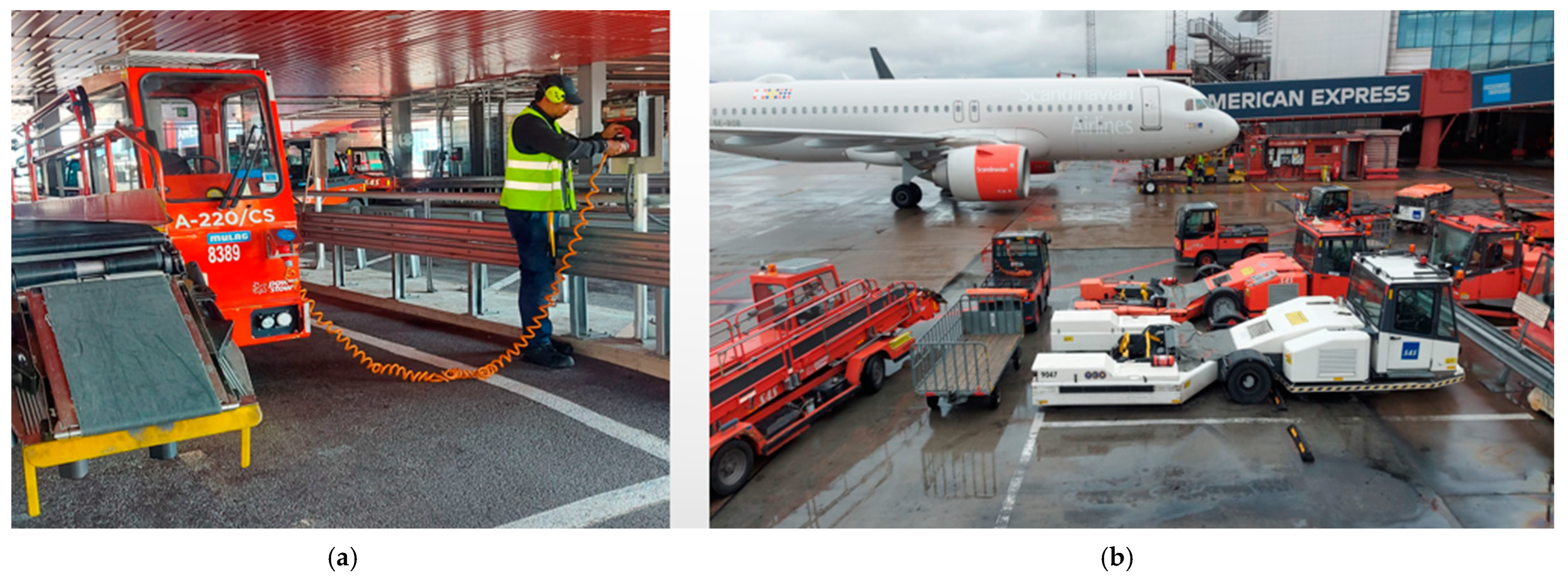
| Airport | Built (Year) | Country, City | Airport Location | Passengers per Year | Cargo per Year (Tons) | Destinations | Terminals, Runways | Area (Acres) | Employees |
|---|---|---|---|---|---|---|---|---|---|
| Dubai Int. Airport | 1960 | UAE, Dubai | 4.7 km east of Dubai city center | 86,878,900 | 1,805,898 | 262 | 3 terminals, 2 runways | 7200 | 7700 |
| Muscat Int. Airport | 1973 | Oman, Muscat | 32 km from Muscat old city | 12,599,545 | 168,824 | 146 | 1 terminal, 2 runways | 5500 | 2000 |
| Stockholm Arlanda Airport | 1959 | Sweden, Stockholm | 37 km north of Stockholm | 21,800,000 | 96,710 | 154 | 4 terminals, 3 runways | 2500 | 17,000 |
| Sydney Airport | 1920 | Australia, Sydney | 8 km south of Sydney’s central business district | 38,650,000 | 320,170 | 90 | 3 terminals, 3 runways, | 2241 | 30,000 |
| Toronto Pearson Int. Airport | 1937 | Canada, Toronto | 22.5 km northwest of downtown Toronto | 44,800,000 | 428,468 | 195 | 2 terminals, 5 runways | 4600 | 50,000 |
| Zurich Airport | 1948 | Switzerland, Zurich | 13 km north of central Zurich | 28,885,506 | 377,998 | 205 | 3 terminals, 3 runways | 1100 | 25,000 |
| Word | Number of Hits |
|---|---|
| Biofuel | 15 |
| Hydrogen fuel | 8 |
| SAF | 7 |
| Alternative aviation fuel | 4 |
| Hybrid electric aircraft | 2 |
| * Aviation fuel, blends, electrofuel, etc. | 1 |
Disclaimer/Publisher’s Note: The statements, opinions and data contained in all publications are solely those of the individual author(s) and contributor(s) and not of MDPI and/or the editor(s). MDPI and/or the editor(s) disclaim responsibility for any injury to people or property resulting from any ideas, methods, instructions or products referred to in the content. |
© 2025 by the authors. Licensee MDPI, Basel, Switzerland. This article is an open access article distributed under the terms and conditions of the Creative Commons Attribution (CC BY) license (https://creativecommons.org/licenses/by/4.0/).
Share and Cite
El Zein, M.; Karimipanah, T.; Ameen, A. Airports—Energy and Sustainability Perspectives. Energies 2025, 18, 1360. https://doi.org/10.3390/en18061360
El Zein M, Karimipanah T, Ameen A. Airports—Energy and Sustainability Perspectives. Energies. 2025; 18(6):1360. https://doi.org/10.3390/en18061360
Chicago/Turabian StyleEl Zein, Musadag, Taghi Karimipanah, and Arman Ameen. 2025. "Airports—Energy and Sustainability Perspectives" Energies 18, no. 6: 1360. https://doi.org/10.3390/en18061360
APA StyleEl Zein, M., Karimipanah, T., & Ameen, A. (2025). Airports—Energy and Sustainability Perspectives. Energies, 18(6), 1360. https://doi.org/10.3390/en18061360








